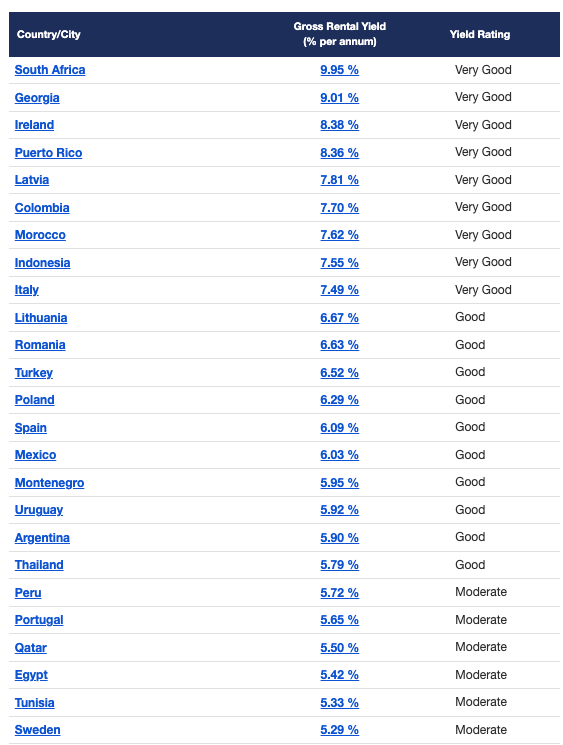Real estate investing presents a dual landscape of opportunities and challenges. On the positive side, it offers the potential for substantial returns, primarily through property appreciation and consistent rental income.
Real estate assets, over time, have historically shown an inclination to increase in value, contributing to long-term wealth accumulation.
The steady cash flow generated from rental properties can provide a reliable source of passive income, helping to offset mortgage and operational expenses. Tax benefits, including deductions for mortgage interest and property taxes, further enhance the financial advantages of real estate investment. Active management responsibilities, from dealing with tenants to addressing maintenance issues, can be time-consuming.
Real estate investment strategies can vary based on individual goals, risk tolerance, market conditions, and investment horizon. Here are 12 popular real estate investment strategies:
Buy and Hold: Acquire properties with the intention of holding them for an extended period, benefiting from property value appreciation and rental income.
Fix and Flip: Purchase distressed properties, renovate or improve them, and sell quickly for a profit.
Wholesaling: Secure properties under contract at a low price and then assign the contract to another investor for a fee, without actually taking ownership of the property.
Real Estate Crowdfunding: Pooling funds from multiple investors to invest in larger real estate projects.
Approach: Invest in real estate projects or properties through online platforms that allow investors to contribute smaller amounts.
Real Estate Investment Trusts (REITs): Passive income and diversification through investment in publicly traded real estate companies. Invest in shares of companies that own, operate, or finance income-generating real estate.
Short-Term Rentals (Airbnb, Vacation Rentals): Higher rental income through short-term rentals.
Approach: Rent out properties on a short-term basis to tourists or business travelers, often using platforms like Airbnb.
Commercial Real Estate: Income generation and appreciation through commercial property ownership.
Invest in retail, office, or industrial properties, with the potential for higher rental income compared to residential properties.
Tax Lien Investing: Profit from purchasing tax liens on properties with delinquent taxes. Purchase tax liens at auctions, and earn interest or acquire the property if the owner fails to pay the delinquent taxes.
Long term Leasing: Combine rental income with the potential for future property sale. Lease the property to a tenant with the option to purchase it at a later date at a pre-determined price.
Before pursuing any real estate investment strategy, it’s crucial to conduct thorough research, understand market conditions, and, if necessary, consult with financial and real estate professionals. Additionally, staying informed about local regulations and economic trends is essential for successful real estate investing.
The BRRRR Strategy
Another strategy that is making waves in the past few decades in the industry is BRRRR, which stands for Buy, Rehab, Rent, Refinance, Repeat, and it’s a real estate investment strategy. The BRRRR strategy is designed to allow investors to acquire properties, improve them, rent them out, refinance to recover invested capital, and then repeat the process with the newly acquired funds. Here’s a breakdown of BRRR in each step:
Buy: Investors aim to identify properties with potential for value appreciation, often distressed or underpriced. This could involve purchasing properties through foreclosure auctions, short sales, or negotiating directly with motivated sellers.
Rehab: The property undergoes renovations and improvements to increase its overall value. Investors may focus on enhancing both the aesthetic and functional aspects of the property, addressing any issues that may affect its marketability.
Rent: After the rehabilitation phase, the property is rented out to tenants. This step generates rental income, helping cover ongoing expenses such as property taxes, insurance, and maintenance costs. A crucial aspect is selecting reliable tenants to ensure a steady stream of income.
Refinance: Once the property is stabilized with tenants and its value has increased due to renovations, the investor refinances the initial mortgage. The new mortgage is based on the property’s higher appraised value, allowing the investor to pull out a significant portion of the equity gained during the rehab phase.
Repeat: With the funds obtained through refinancing, the investor can repeat the process. This might involve acquiring another distressed property, renovating it, renting it out, and refinancing to access capital for the next investment. The goal is to continually grow the real estate portfolio using the profits and equity from previous properties.
The BRRRR strategy requires careful financial planning, a solid understanding of the local real estate market, and effective project management skills to ensure that each phase is executed successfully. Successful implementation of the BRRRR strategy can lead to a growing and profitable real estate portfolio over time.
BUYING CRITERION: When considering real estate investment, it’s essential to establish clear buying criteria to guide your decisions and help ensure that your investments align with your goals and risk tolerance. Here are key factors to consider:
1. Location:
– Consider the location’s current and future potential for growth.
– Evaluate proximity to amenities, schools, public transportation, and employment centers.
– Research the neighborhood’s crime rates and overall safety.
2. Market Trends:
– Analyze current and future market trends in the area.
– Look at historical property values, rental rates, and sales trends.
– Consider the potential for property appreciation over time.
3. Property Type:
– Define the type of property that aligns with your investment goals (residential, commercial, industrial).
– Assess the condition of the property and potential renovation needs.
– Consider the property’s age, size, and layout.
4. Return on Investment (ROI):
– Calculate potential rental income and compare it to the property’s purchase price.
– Evaluate the potential for property appreciation over time.
– Assess the overall cash flow and return on investment.
5. Financing Options:
– Explore financing options and interest rates.
– Consider the down payment requirements and the impact on cash flow.
– Evaluate the potential for refinancing in the future.
6. Cash Flow:
– Assess the property’s cash flow potential by calculating income and expenses.
– Consider property management fees, maintenance costs, and property taxes.
– Ensure that the property generates positive cash flow.
7. Risk Tolerance:
– Evaluate your risk tolerance and investment horizon.
– Consider the economic stability of the area and potential risks such as market fluctuations or changes in local regulations.
8. Local Regulations:
– Understand local zoning laws and regulations that may impact the use of the property.
– Research property tax rates and any upcoming developments or changes in the area.
9. Exit Strategy:
– Have a clear exit strategy in mind, whether it’s selling the property, refinancing, or holding for long-term rental income.
– Consider potential challenges in selling the property if needed.
10. Network and Expertise:
– Consider working with a real estate agent, property manager, or other experts to navigate the local market.
By carefully considering these criteria, you can make informed decisions and increase the likelihood of a successful and profitable real estate investment. Remember that real estate is a long-term investment, and thorough research is crucial to mitigating risks and maximizing returns.
Rental Yields
Rental yield is a financial metric used in real estate to assess the return on an investment property, specifically in terms of rental income. It is expressed as a percentage and is calculated by dividing the property’s annual rental income by its market value or acquisition cost. The formula for rental yield is typically represented as:
There are two main types of rental yield:
1. Gross Rental Yield:
– This calculation considers only the rental income in relation to the property’s market value or acquisition cost. It provides a basic overview of the income potential of the property.

2. Net Rental Yield:
– Net rental yield takes into account additional costs associated with owning and managing the property, such as property management fees, maintenance costs, property taxes, and insurance. It provides a more realistic representation of the actual income an investor can expect after deducting expenses.

Rental yield is a valuable tool for real estate investors to compare the potential returns of different properties. A higher rental yield generally indicates a better income-generating property, but it’s crucial to consider other factors such as property appreciation, location, and overall investment goals. Investors should also be mindful of local market conditions and economic factors that can influence rental yields over time.
Top countries by Avg Rental Yield in 2023:

Besides the above there are more strategies such as land development and investing in apartments nearer to educational institutes.
Land Development
Land development for instance involves the process of subdividing, improving, and preparing land for construction or sale. Successful land development strategies require careful planning, regulatory compliance, and market analysis. Here are key strategies in land development:
Site Selection and Analysis: Identify promising locations for development. Conduct thorough market research, considering factors such as demographics, zoning regulations, accessibility, and potential demand for developed land.
Zoning and Regulatory Compliance: Navigate zoning regulations and obtain necessary approvals. Understand local zoning laws, engage with planning departments, and secure necessary permits to ensure compliance with regulations governing land use.
Feasibility Studies: Assess the economic viability of the development project. Conduct feasibility studies to analyze the costs, potential returns, and risks associated with the development, considering factors such as infrastructure requirements and environmental impact.
Land Acquisition: Acquire land suitable for development. Negotiate with landowners, analyze the title and legal aspects, and secure financing for land acquisition.
Infrastructure Development: Develop essential infrastructure for the land. Invest in necessary infrastructure such as roads, utilities, and drainage systems to make the land suitable for construction and increase its market value.
Subdivision Planning: Divide large tracts of land into smaller, saleable lots. Work with surveyors and civil engineers to design subdivisions that maximize land use while adhering to local regulations.
Environmental Considerations: Address environmental concerns and comply with regulations. Conduct environmental impact assessments, address any environmental issues, and adhere to sustainability practices.
Market Timing: Time the development project based on market conditions. Consider economic trends, demand for real estate, and local market conditions to optimize the timing of development and maximize returns.
Joint Ventures: Share resources and risks through partnerships. Collaborate with other developers or investors through joint ventures to pool resources and expertise for larger or more complex projects.
Sales and Marketing: Sell or lease developed lots. Implement effective sales and marketing strategies to attract buyers or lessees, showcasing the benefits of the developed land.
Community Engagement: Build positive relationships with the local community. Engage with the community, address concerns, and communicate the benefits of the development to gain support and navigate potential opposition.
Successful land development requires a multidisciplinary approach, involving professionals such as civil engineers, surveyors, environmental consultants, and legal advisors.
Developers must navigate a complex landscape of regulations, market dynamics, and construction challenges to bring a land development project to fruition.
Whether pursuing buy-and-hold, fix-and-flip, or land development strategies, investors must carefully consider their objectives, risk tolerance, and market conditions. Real estate investment offers the potential for long-term wealth accumulation, steady cash flow, and portfolio diversification. Land development, on the other hand, involves a meticulous process of site selection, regulatory compliance, and infrastructure development to unlock the value of raw land.
(Disclaimer: The information provided here is for general informational purposes only and should not be construed as financial, investment, or professional advice. Before making any financial decisions, it is recommended that you seek the advice of a qualified professional.)












